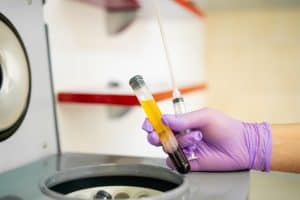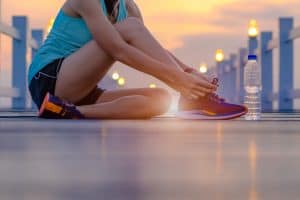
Platelet Rich Plasma

It’s difficult to overstate how unique regenerative therapies such as PRP – Platelet Rich Plasma- are. In previous decades many common injuries either required surgery for a full recovery or “stayed broke.” This is ironic because the patient’s problem isn’t a lack of surgery, it’s a lack of proper and complete healing. In many cases, PRP can permanently solve this problem.
Platelet Rich Plasma Uses
- Arthritis
- Tendonitis and tendonosis
- Plantar fasciitis
- Muscle strains
- Ankle ligament injuries
- Chronic foot and ankle pain
Call 878-313-3338
PRP in Sports Medicine
Platelets aren’t just for clotting, however, and play a central role in the healing process as well. These particles are coated with growth factors and other naturally occurring compounds which initiate and sustain tissue healing. These substances are the chemical messengers of healing—without these signals healing simply will not start.

Platelet Rich Plasma- How it Works
With this background information we can begin to understand how platelet rich plasma works. Your doctor, physician’s assistant, nurse, or phlebologist will first draw enough of the patient’s blood to facilitate the procedure. This amount can vary but usually amounts to no more than 50-100 milliliters (ml). The blood is then spun down in a laboratory centrifuge at high speeds. This causes the blood cells, platelets, and plasma to separate into different layers.
Once all of this is done a highly concentrated mix of plasma containing extremely high levels of platelets can be made. While preparing the mixture, it’s common for physicians to add natural booster compounds such as thrombin, an important clotting factor. Calcium chloride, a form of salt, is also usually included. This is done to stabilize and augment the solution, allowing it to work more quickly.
This concentrate is known as Platelet Rich Plasma. Once prepared, it is immediately injected into injured ligaments, tendons, and cartilage—the tissues joints are made of.
Using PRP, it’s possible to “trick” tissue which is chronically damaged into healing at an accelerated rate. Stubborn injuries such as bone-on-bone arthritis and chronically sprained ankles can now be made to greatly improve, or even heal entirely.
Do Injections of Platelet-Rich Plasma Work?
To determine the disorders that PRP can treat, more research is required. Research to date indicates that it expedites recovery following surgery or damage for some disorders, such as torn tendons. According to several research, PRP injections for persons with rotator cuff injuries reduce pain and increase mobility in addition to promoting the healing of wounded tissue. Those with male or female pattern baldness who receive PRP injections seem to see less hair loss. Nevertheless, it’s unclear if facial PRP injections reduce outwardly noticeable aging symptoms like wrinkles and drooping skin.
PRP injections may not begin to produce results for several weeks.
Up to 6 months may pass before you fully see the symptoms of some disorders, especially those that affect the skin or the hair. You might have to repeat the process for some ailments, including hair loss, in order to keep the effects.
How long does it take for PRP injections to heal?
After receiving a PRP injection for an injury, your doctor might advise you to rest the injured area. These suggestions, however, are less about the PRP injections and more about the ailment. Most people are able to resume their normal routines after receiving PRP injections.
You might not see a difference right away if you get PRP injections because they’re meant to encourage growth or healing.
Yet after a few weeks or months, you might notice that the area is mending more quickly or producing more hair than you would have anticipated if you hadn’t received PRP injections.
What Is Treatable with Platelet-Rich Plasma?
PRP injections are used to treat joint injuries, tendonitis, muscular injuries, ruptured tendons, and arthritis-related discomfort. Also, they are becoming more typical for cosmetic operations. For instance, doctors and specialists in hair replacement employ PRP injections to treat androgenic alopecia, also referred to as male or female pattern baldness and affecting both men and women.
